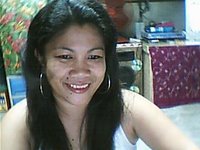19th Kadayawan sa Davaw Festival of Festivals
The Philippine Eagle and Bagobo tribe’s headgear is a fitting symbol of what Davao City has become – a vibrant and cosmopolitan city that is able to look to its past while charting its course as the premier metropolis in Mindanao.
Davao City’s inhabitants consider themselves as descendants of the Bagobo tribe- noble race that is best known for being the most friendly and adaptive to change of all the Mindanao tribes and also having the fiercest warriors.
The contradiction of being the friendliest and fiercest of the tribes has given rise to the Bagobo’s pivotal role in the history of Davao City, particularly in how it has assimilated some aspects of foreign culture without losing its Filipino and Bagobo identity.
The Bagobo’s friendly nature allowed the Spanish conquistadores to make their presence felt when they landed in Mindanao in 1800s. Tribal elders say that their ancestors, base on oral history passed from generation to generation, ha given careful thought to the arrival of the foreigners to their land.
The nobility allowed the Bagobo to rise above themselves and take in the foreigners as guests. The strength of their character assured they would remain true their roots but take in the best the foreigners had to offer.
And so they did, embracing the culture and religion of Christianity, modifying it to suit their individuality as a tribe but never really straying far from what they truly were.
The Spaniards came and assimilated themselves because they had been allowed to into the culture but never really conquered the Bagobo. Over the next decades, it was to be same for the Americans and the Japanese who came to explore Mindanao and see the riches that it has to offer.
As the Bagobos are deeply rooted in Davao history, their presence in the city is greatly felt. Their force form part of the indigenous people who are widely recognized by the local government and the people in general for their contribution to what the city is now.
Davao City is not the only home to the Bagobo, it is home to the Philippine Eagle, more precisely the Philippine Eagle Foundation which was set up because this magnificent bird on the verge of extinction.
Now, with several pairs and their offspring at their conservatory, the Philippine Eagle Foundation has come a long way from its beginning in 1987, when the staff even had to forego their salaries for one year so the feeding of the eagles would continue.
With a two-meter wingspan at its full growth, the magnificence of the Philippine Eagle is beyond question and the foundation has used the conservation program for the Philippine Eagle as a springboard to enlighten communities about the importance of conserving not only the species but also its habitat to ensure its survival.
As host of the foundation and its conservatory, Davao City pays tribute to this magnificent raptor, the only blue eyed raptor in the world, by adopting it as the symbol of the Kadayawan sa Davaw, its annual week-long festival starting August 16-22. Kadayawan is a celebration of life, a thanksgiving for the gifts of nature, the wealth of culture, the bounties of harvest, and serenity of living.
Dubbed as the “festival of festivals,” the Kadayawan sa Dabaw features very exciting and colorful multy-sensory events such as the:
1. Pasasalamat (August 16)- The formal opening rituals of the festival with an ecumenical ceremony.
2. Indigay sa Lumadnong Dula (Aug.16&17)- An array of indigenous and traditional community sports.
3. Hiyas sa Kadayawan (Aug.18)- The gender-free search for the symbol with Mindanawon.
4. Urog Etnika (Aug.18)- Conjunctive to the Hiyas sa Kadayawan search.
5. Davao River Festival (Aug.19)- A celebration performed along the historic Davao River.
6. Agongan ug Kulintangan (Aug.19)- A competition of musical skills and dexterity in the playing of agong, kulintang, gabang, and other indigenous musical instrument.
7. Mindanao Indigenous Dance Festival (Aug.20)- Theatrical tribal suites of dances and music depicting Mindanao Indigenous epics, folklores and traditions rendered by Davao and Mindanao’s many arts and culture groups.
8. Indak-indak sa Kadalanan (Aug.21)- A people’s celebration through street dancing and merriment to the beat of tribal music along the major streets of Davao City.
9. Yanog ug Yugyugan sa kadalanan (Aug.21)- Disco dancing on the streets with reverberating sounds of live bands and the best FM stations in town.
10. Floral Float Parade (Aug.22) A parade of florally dressed floats of various shapes and sizes showcasing the abundant vegetation of the Davao.
11. 9th Philippine Floriculture Congress – The annual gathering of floral and ornamental growers, enthusiasts, and marketers from all parts of the country.
12. Kadayawan Agro-Industrial Trade Fair – Showcasing the best in floriculture and ornamental plants, fruits, vegetables, handicraft.
August 15, 2004,Philippine Panorama Manila Bulletin
Proceed to Best of Pinoys


0 Comments:
Post a Comment
<< Home